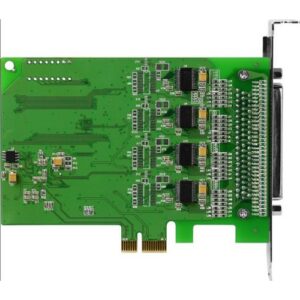|
I-2532
|
Fiber optic transmission medium is a good material to protect data transmission from EMI/RFI interference and has been used in harsh environment extensively. On the other hand, CAN bus is famous in industrial application. In order to solve the problem between different transmission medium, I-2532 is specially designed for converting the electrical CAN bus signal to fiber optic cables.
The fiber length between two I-2532s can be up to 1.4km (4593ft), it is mainly decided by the cable attenuation of fiber and the CAN bus baud. I-2532 is the economic solution for applications which require protecting the data transmission from electrical exposure, surges, lightning or chemical corrosion.
Request For Quotation
Description
Applications
- Control System
- Building Automation
- Factory Automation
- Distributed data acquisition

Features
- Compatible with CAN specification 2.0A and 2.0B
- Fully compatible with the ISO 11898-2 standard
- Support a range of baud rates from 10kbps ~ 500Kbps
- Jumper for 120Ω terminal resistor of the CAN bus
- Fiber Port: ST (Multi-mode)
- Fiber Cable: 50/125 μm , 62.5/125 μm, 100/140μm
- Wave Length: 850 nm
- Auto-baud detection
- up to 100 nodes on CAN port
- Removable terminal block
- Mount easily on DIN-rail
- 3 kv galvanic isolaton
- One CAN and one fiber channel






